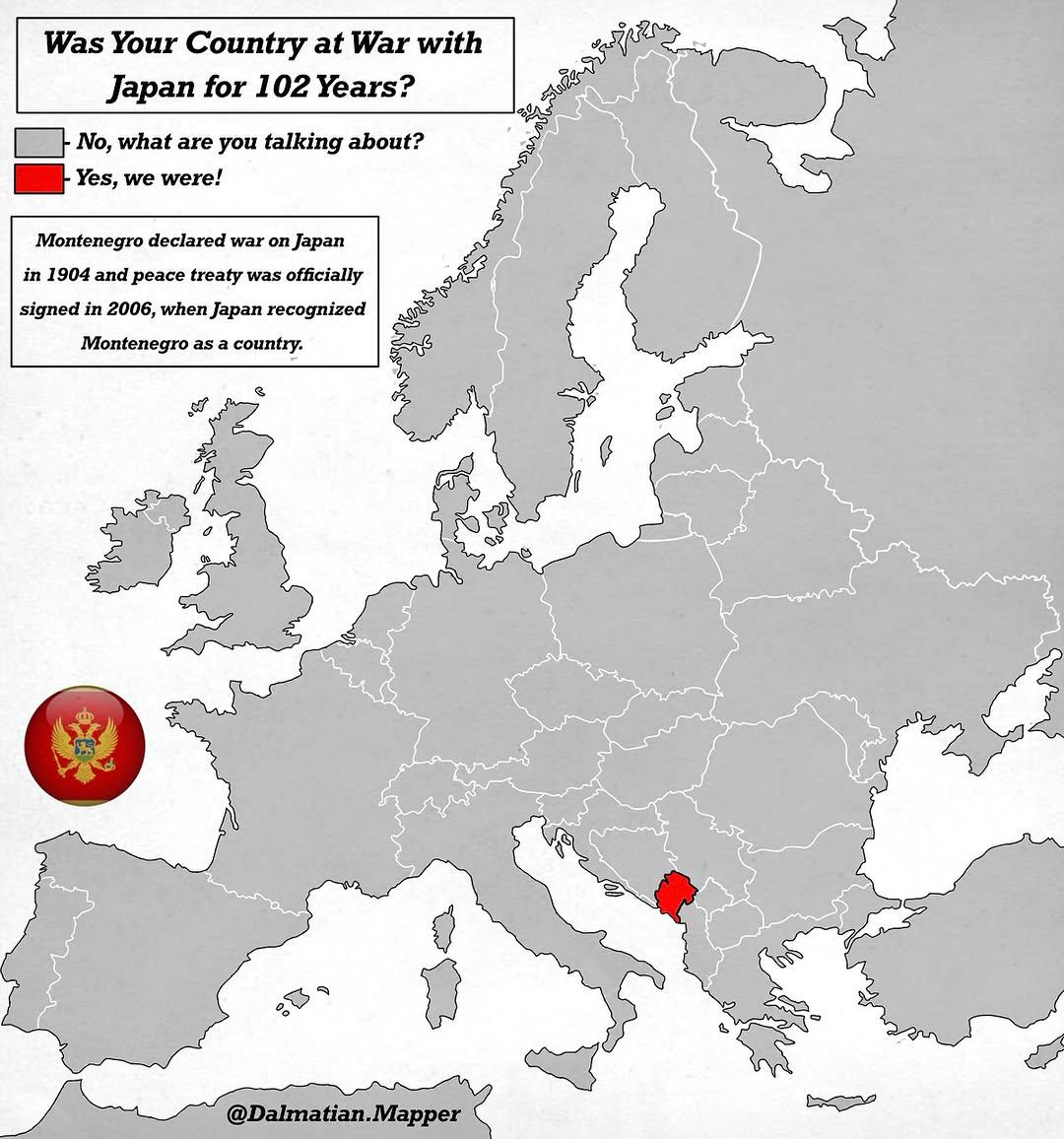Countries at War with Japan Map


David Chen
Data Visualization Specialist
David Chen is an expert in transforming complex geographic datasets into compelling visual narratives. He combines his background in computer science ...
Geographic Analysis
What This Map Shows
The visualization titled "Was Your Country Ever At War With Japan For 102 Years?" meticulously outlines the countries that engaged in conflict with Japan from the late 19th century through the mid-20th century. This map serves as a historical chronicle, showcasing the extensive military engagements that Japan was involved in during a period marked by imperial ambitions and significant geopolitical shifts.
Transitioning from the visual representation, let’s dive into the broader implications of these conflicts, the historical context behind them, and how they shaped the international landscape.
Deep Dive into Japan's Military Engagements
Japan's military history during this 102-year span is both complex and multifaceted. It began in earnest during the First Sino-Japanese War (1894-1895), when Japan asserted its growing power against China, leading to territorial gains in Taiwan and Korea. This conflict marked Japan's emergence as a significant player on the global stage.
The Russo-Japanese War (1904-1905) further established Japan's military prowess, as it became the first Asian nation to defeat a European power in modern times. This victory not only bolstered national pride but also shifted the dynamics of colonial competition in Asia, prompting other powers to reassess their strategies.
World War I saw Japan join the Allies, seizing territories in the Pacific and expanding its influence in Asia. However, it was during World War II that Japan's militaristic ambitions reached their peak, engaging in conflicts across Asia and the Pacific. The invasions of Manchuria in 1931 and China in 1937 led to some of the most brutal campaigns in modern history, resulting in immense suffering and loss of life.
Interestingly, Japan's conflicts weren’t solely about expansion. They were also responses to perceived threats from Western powers, particularly as the U.S. emerged as a dominant force in the Pacific. The attack on Pearl Harbor in 1941 was not just an act of war; it was a desperate attempt to secure Japan's empire against encroaching Western influence.
Throughout these conflicts, Japan faced varying degrees of resistance from local populations and rival nations. The ramifications of these wars shaped not only Japan's national identity but also its relationships with other countries, many of which are still felt today.
Regional Analysis
Looking at the map, we can see the geographical spread of Japan's military engagements. In East Asia, countries like China and Korea were directly impacted, experiencing occupation and conflict that led to long-lasting animosities. For instance, the Second Sino-Japanese War resulted in widespread atrocities, particularly the Nanjing Massacre, which still influences Sino-Japanese relations.
In Southeast Asia, nations such as Vietnam, Malaysia, and the Philippines saw Japanese occupation during World War II, which has left scars in collective memory. The impact of these conflicts varied; for instance, while Japan's occupation led to infrastructural developments in some areas, it often resulted in harsh suppression of local culture and autonomy.
Meanwhile, the Pacific Islands faced their own unique challenges. Countries like Guam and the Solomon Islands experienced direct military engagement, with local populations caught in the crossfire of larger geopolitical struggles. The legacy of these wars has fostered complex relationships between these nations and Japan, as they navigate the balance of historical grievances and current diplomacy.
Significance and Impact
Understanding the historical conflicts involving Japan is crucial for several reasons. First, they illustrate the broader themes of imperialism, colonialism, and the quest for national identity that shaped not just Japan, but much of Asia and the Pacific. These wars contributed to the rise of nationalist movements and the eventual decolonization of several territories post-World War II.
Moreover, the map highlights the interconnectedness of global history. The consequences of Japan's wars have ripple effects that extend into contemporary international relations, influencing diplomatic ties and economic partnerships. The memory of conflict still lingers, affecting how countries engage with Japan today.
Looking forward, it’s essential to recognize that the historical narrative surrounding these conflicts continues to evolve. As Japan faces new challenges in a rapidly changing geopolitical landscape, understanding its past is vital for fostering peace and cooperation in the region. The lessons learned from these conflicts remind us of the importance of dialogue, reconciliation, and mutual respect among nations.
In conclusion, this map does more than just chart territories; it encapsulates a critical period in history that serves as a reminder of the complexities of human relationships shaped by war and peace.
Visualization Details
- Published
- October 22, 2025
- Views
- 30
Comments
Loading comments...